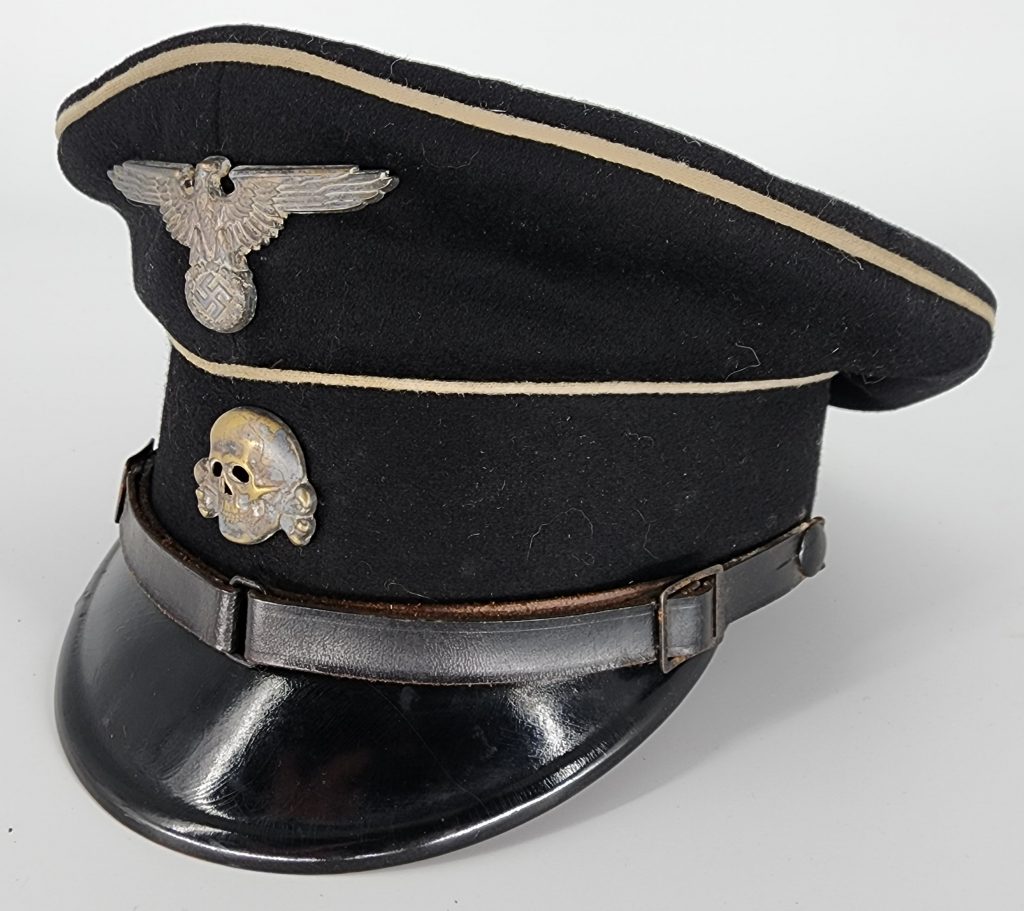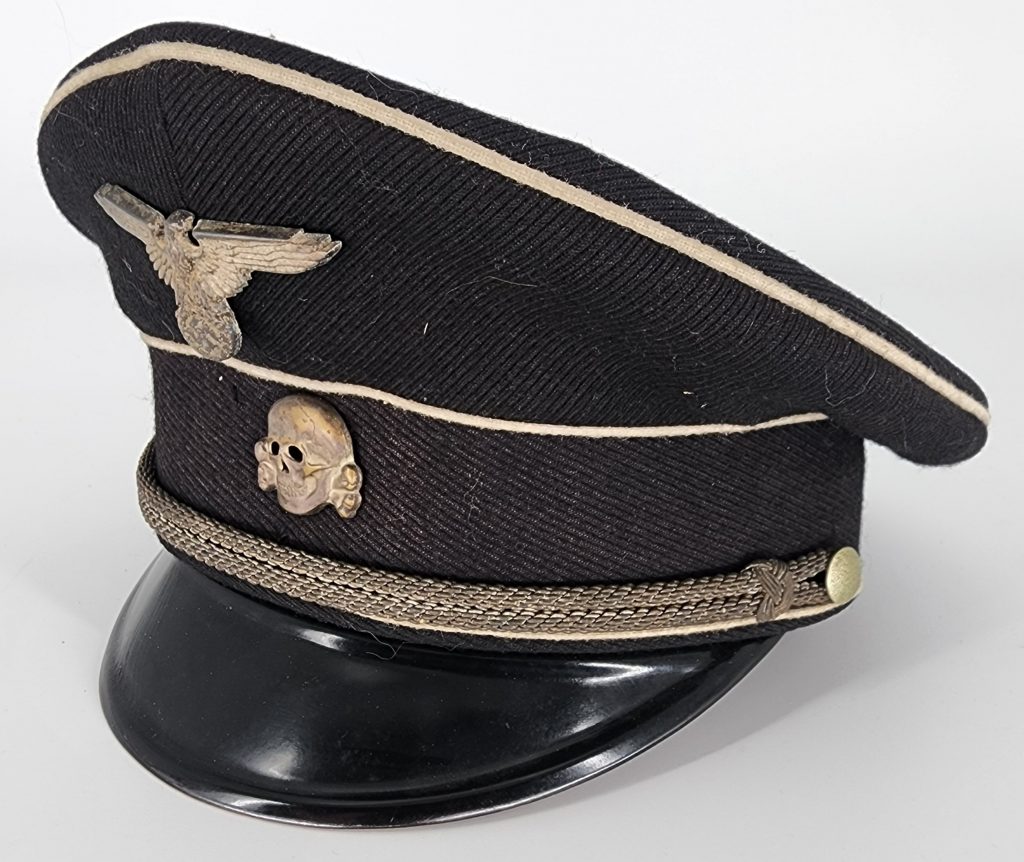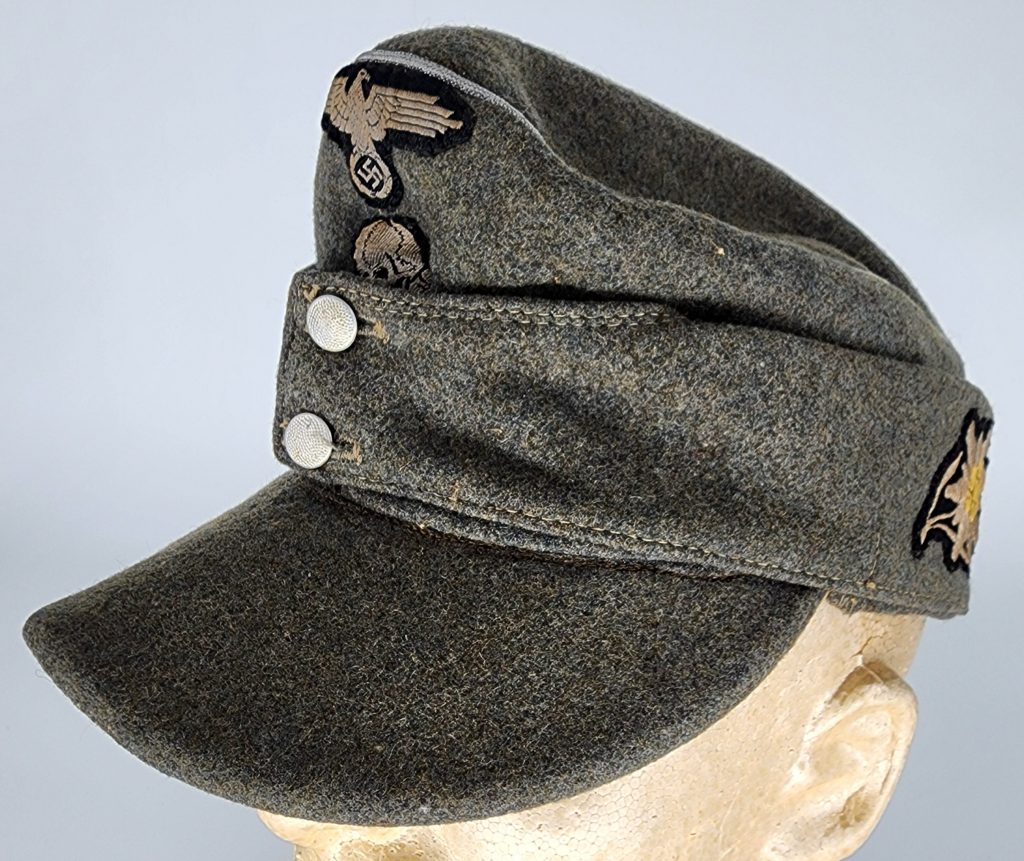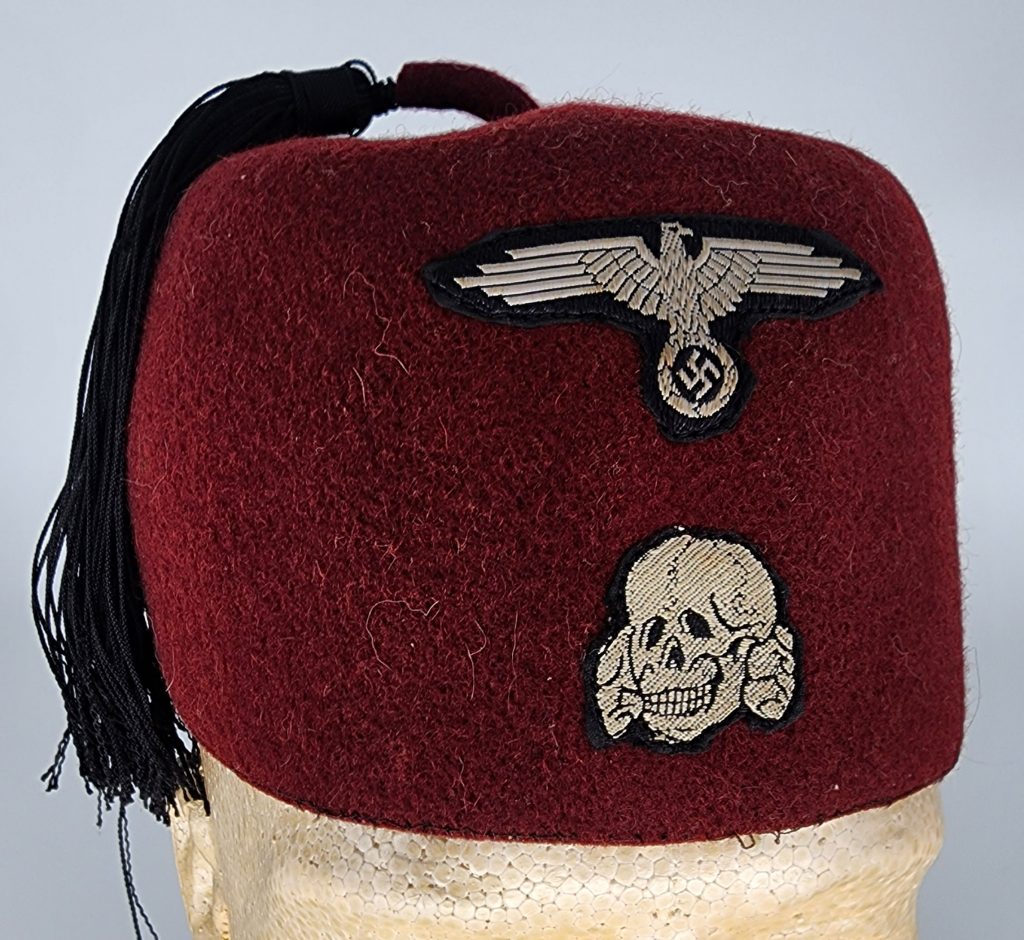During the Nazi period of 1933-1945 in Germany, every military and State-Run organization had its own distinct hat or type of headgear that set it apart. Some can only be differentiated by slight variations in insignia or slight color variations, while others had their very distinct look like the black Allgemeine SS hats.
WWII German Allgemeine SS Enlisted Man’s Visor Hat. In November 1925 personnel of the newly formed SS adopted a black Kepi to distinguish themselves from their SA counterparts. In 1932, the first SS black service visor caps were introduced for wear to replace the kepi as the standard issue cap for all ranks. Originally all the service caps were piped with the white piping until regulations of June 1934 introduced the silver/aluminum piping for the ranks of SS-Oberführer and above.

WWII German Allgemeine SS Officer’s Visor Hat. In November 1925 personnel of the newly formed SS adopted a black Kepi to distinguish themselves from their SA counterparts. In 1932, the first SS black service visor caps were introduced for wear to replace the kepi as the standard issue cap for all ranks. Originally all the service caps were piped with the white piping until regulations of June 1934 introduced the silver/aluminum piping for the ranks of SS-Oberführer and above. These office hats also had silver chin cords instead of the leather chin straps.

WWII German M43 Waffen SS Hat for Gebirgsjager / Mountain Troops. The Mountain cap was originally introduced for wear by Mountain, Ski and Jäger personnel in the German army in the early 1930’s, with the design based on the caps worn by Austrian Mountain troops in WWI. With the introduction of the SS version of the M43 cap on October 1, 1943, SS mountain troops were issued a distinctive edelweiss cap insignia to differentiate themselves from other personnel.

WWII German Officer M43 Panzer Hat. The M43 field cap was introduced for wear by all ranks on June 1, 1943 as a replacement cap for the other field caps in use at the time. The standard issue M43 field caps were constructed of field-grey material while a black version was introduced at the same time for Panzer, (Armored), personnel. Officer’s ranks were distinguished by piping on the crown of the cap with silver piping for the ranks of Leutnant to Oberst and gilt piping for General Officer’s ranks of Generalmajor to Generalfeldmarschall while EM/NCO’s caps were not piped.

WWII German SS Red Fez. The WWII SS Fez was part of the dress uniform of a Waffen-SS military detachment composed of Muslims from Bosnia, Croatia, and Herzegovina in occupied Yugoslavia. The creation of this unit was authorized by Hitler in 1943. The original purpose was to combat partisans. Through recruitment and conscription, the unit had 26,000 soldiers within a few months. The group was commanded by German or ethnic German officers, and the uniforms were designed to reflect the religion and ethnicity of the recruits.

